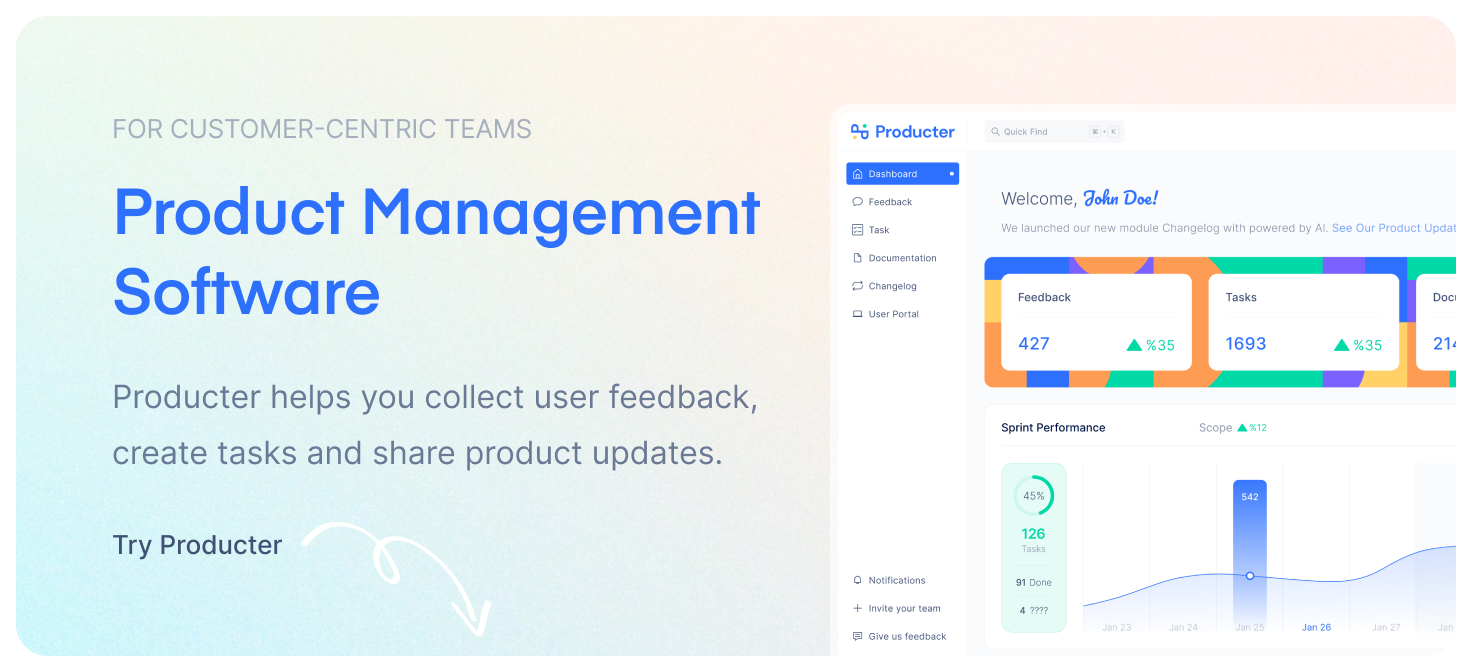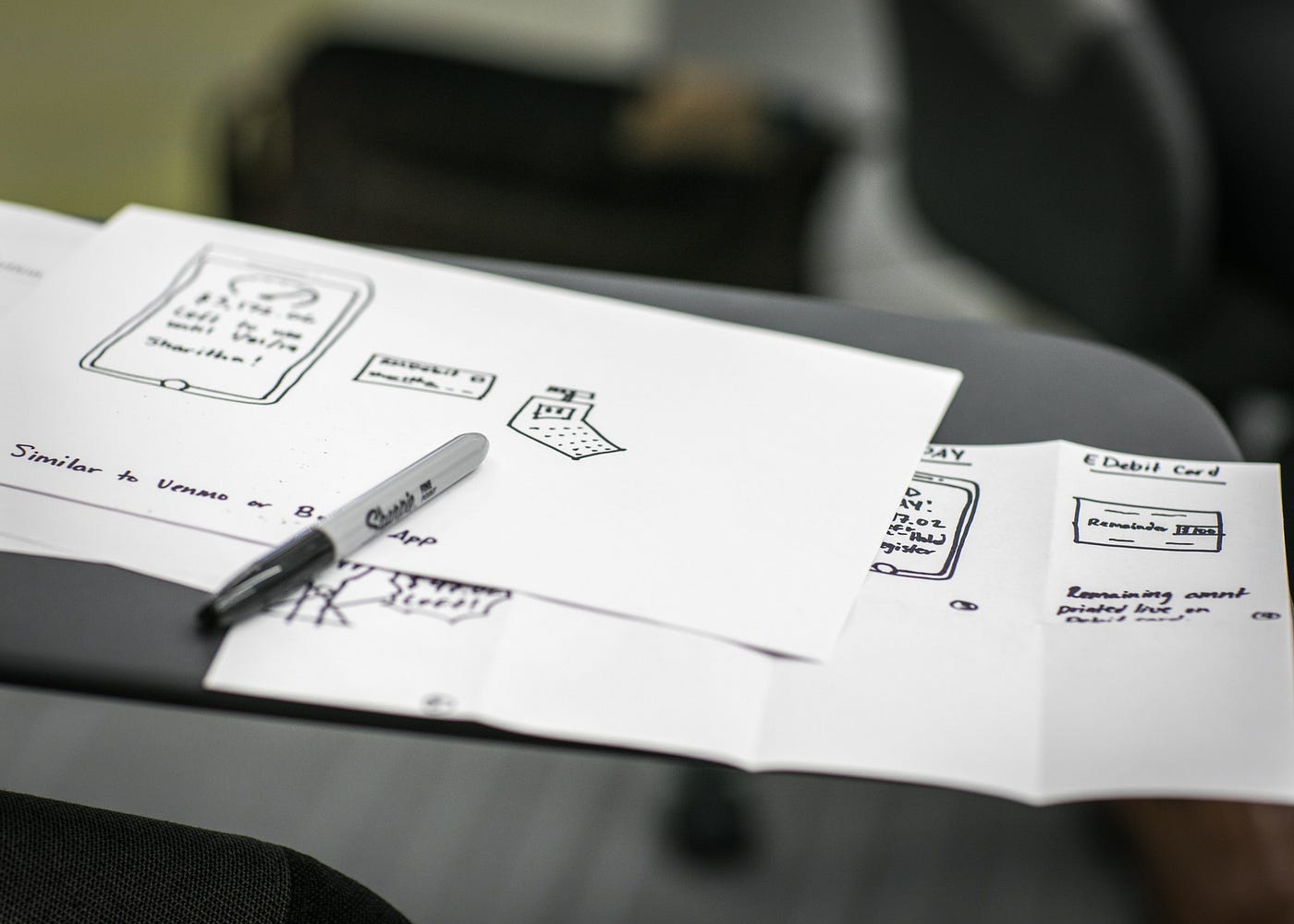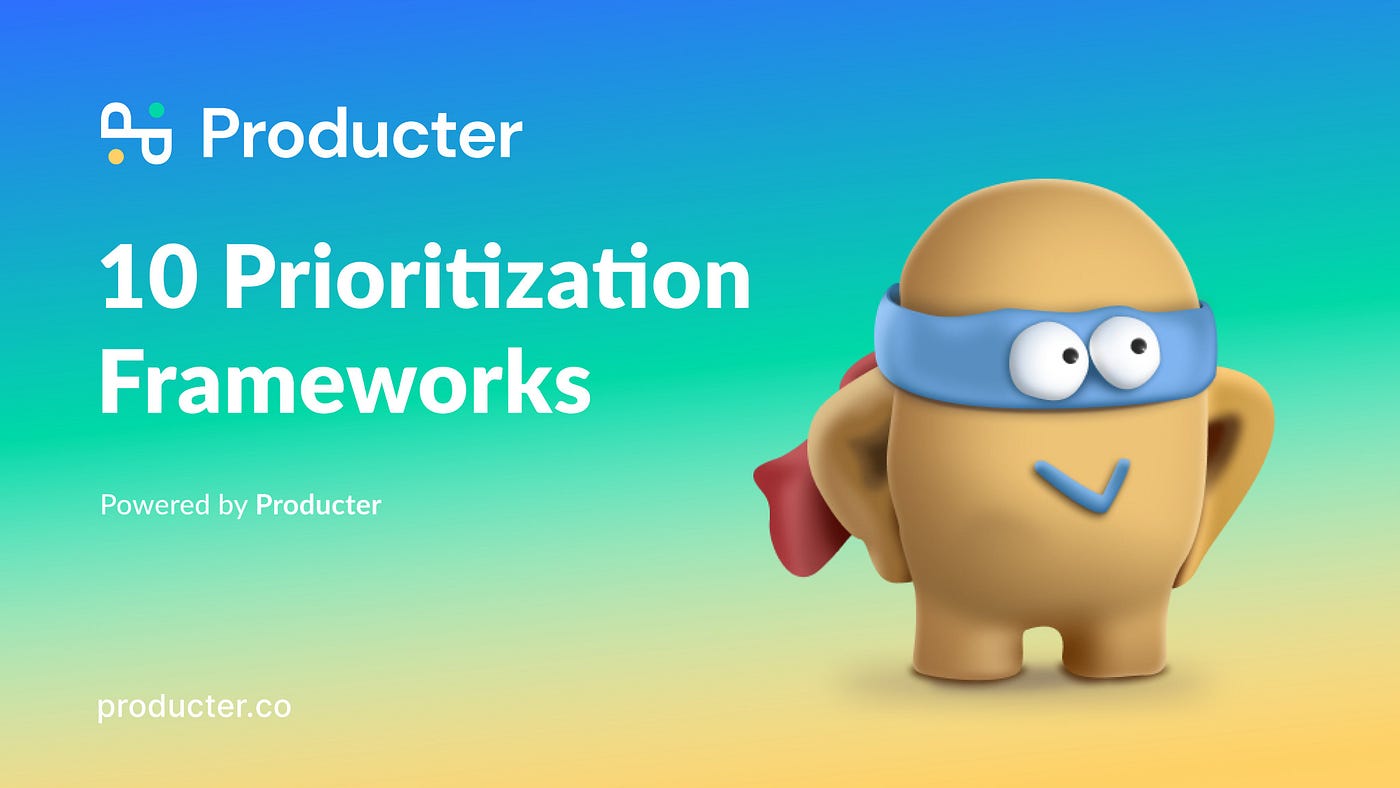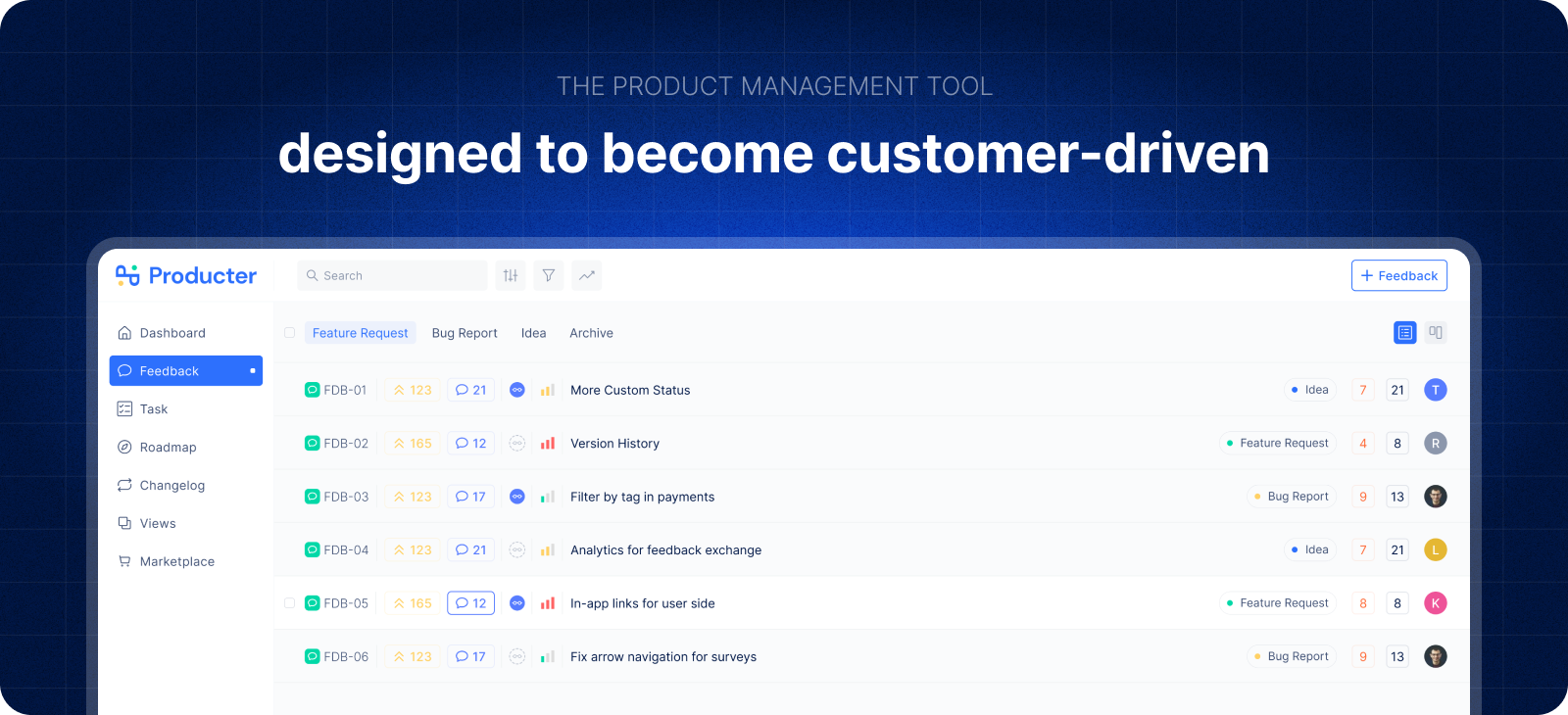Decide what to build next around the customer insight and the product strategy. Enhance visibility and align across teams with Producter.
Producter is an all-in-one product management software for product-oriented companies. It offers teams a complete cycle between collecting feedback, managing tasks, tracking roadmap, and sharing updates.

A PM would have hundreds of various ideas for adding new features to their product if asked.
Many PMs find it challenging to decide what to build next as users flood in with ideas and feature requests.
We’ve listed 10 practical prioritization techniques for you to master as a product manager:
1. Kano Model
In the Kano model, the level of functionality of your product determines the level of customer satisfaction.
Customers can be asked to rate a feature using a questionnaire. You can analyze features based on the individual responses and resulting categories.
Features can be classified into four categories: Performance, Must-be, Attractive, Indifferent.
2. Quality Function Deployment (QFD)
Quality Function Deployment (QFD) is a method for manufacturing described in 1966. QFD’s greatest contribution is helping us focus on product features from different points of view, especially from the customer and the company’s perspective.
This method yields a decision matrix shaped like a house, which is why it’s also called the “house of quality.”
Below is how to implement it for digital products:
- Identify customers’ wants and needs
- Identify the “Voice of the Customer”
- Identify the How’s (The Voice of the Company)
- Relationship between “Voice of the Customer” and “Voice of the Company”
- Generate Priorities
- Examine Priorities
3. Opportunity Scoring
This method has the perception that customers are not suitable sources of solutions because they are not subject matter experts. Nevertheless, it is valuable to get their feedback on how they want the product to work.
Through User Research and other methods, we can build a list of desired outcomes for the product.
Then we should ask customers to rate each outcome on a scale of 1–10 based on how important it is to them and how satisfied they are with it.
Ulwick suggests an Opportunity Score that is given by this formula:
Importance + max(Importance-Satisfaction, 0) = Opportunity
4. Buy a Feature

Buy a Feature is a fun innovation game that encourages players to think outside the box in an engaging way.
Here’s how it works:
- A set of features are presented to a customer group.
- Each customer gets a budget of play money to spend on features;
- Each feature is priced according to some measure of cost (i.e.effort)
- Each player’s budget should be between a third to half of the total cost for all features;
- As players buy features, collect the money and ask them to explain why they’re buying it;
- The game ends when the money runs out or when players have bought all the features they’re interested in.
The results will provide valuable insights regarding the most important features for customers.
5. Story Mapping

Story Maps are primarily intended to enhance the organization and prioritization of work tasks.
Single-list product backlogs are less than ideal as a way to get work done.
In comprehensive strokes, a Story Map is organized like below:
There’s a horizontal axis that represents the usage sequence;
- User stories (or “tasks”) are placed along this axis, in the sequence in which the user performs them,
- The vertical axis stands for criticality,
- User stories (or “tasks”) are organized vertically as to how important they are (from top to bottom),
- Groups of related user stories can be grouped as Activities.
6. MoSCoW Model
A MoSCoW method helps groups of stakeholders and customers agree on what matters most.
Each letter stands for one of the possible categories of prioritization:
- Must have
- Should have
- Could have
- Won’t have
This method offers a quick and straightforward prioritization solution.
7. Prune the Product Tree
This strategy aims to determine where the product is headed based on market needs and if any product areas have been left out. A tree that will be pruned to the player’s liking is the analogy used in the game.
Here’s how it works:
- Draw a large tree on a whiteboard or paper,
- Thick branches represent core product areas, and its external branches represent currently available features,
- Write potential new features on some post-it note,
- Ask customers and stakeholders to place their desired features on the tree, thus defining its next growth phase.
8. Scorecard
Another popular method is the Scorecard. A set of criteria negotiated with stakeholders is used to prioritize features.
Here’s the process:
- Start with a clear strategy that users have validated,
- Select the features that are most related to the overall strategy for the next release,
- Define criteria and weights for scoring,
- Meet with stakeholders and refine the criteria and weights,
- Go over all features and assign a score on their respective impact for each criterion.
9. Feature Bucket
The Feature Buckets is a technique by Adam Nash. Adam believes thatlş uct types; that’s why he explicitly emphasizes this technique for consumer internet products.
Feature concepts should be placed in one of four buckets:
- Metrics Movers: Features that will move the target business and product metrics significantly.
- Customer Requests: These are features that have been requested directly by customers.
- Delight: Innovative features that are internally generated based on insights in design or technology.
- Strategic: Features that are included for strategic reasons related to learning or future goals.
A well-balanced product release should typically include features from all of these buckets.
10. Speed Boat

Speed Boat game focuses on identifying the least liked features in the product. Creating a “let it all out” kind of complaint session can generate a lot of feedback with much noise.
You can easily get to the real issues with customers if you ask the same thing with a controlled and positive tone.
This game is based on this premise:
- Draw a boat on a whiteboard or large piece of paper,
- This is a speed boat, and it should go really fast,
- Unfortunately, it’s being held back by some anchors,
- The boat is the product, and anchors are the features that customers feel frustrated with,
- Ask customers to write on Post-it notes the features they’re not happy with and how much faster they estimate the boat could move without those anchors,
- Each anchor and speed estimate will give you a measure of “pain,” which you can later prioritize for improvement.
You can download the 10 Prioritization Frameworks we created for you here👇👇👇
10 Product Prioritization Frameworks

Producter is a product management tool designed to become customer-driven.
It helps you collect feedback, manage tasks, sharing product updates, creating product docs, and tracking roadmap.






